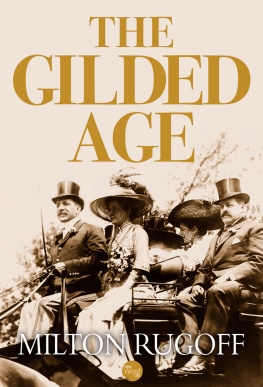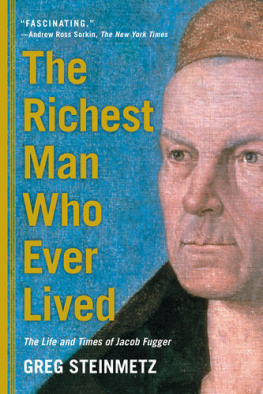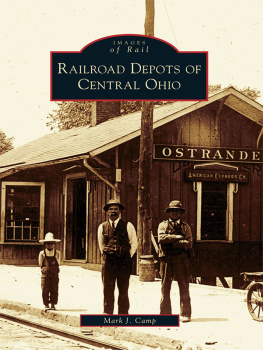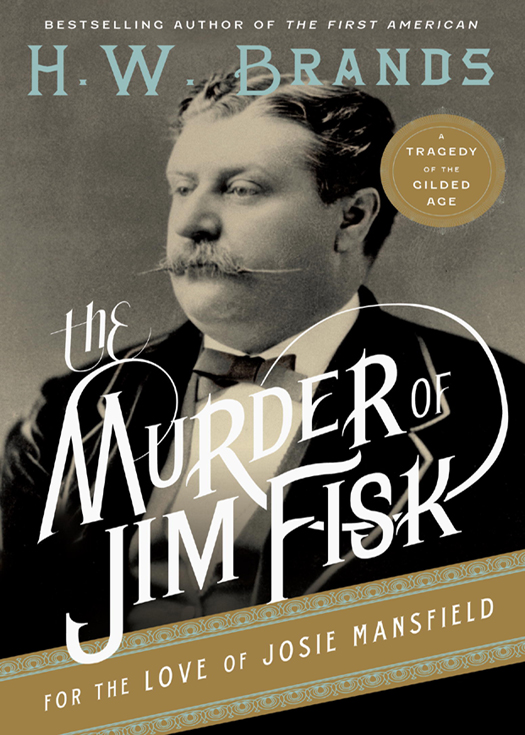H. W. BRANDSS
AMERICAN PORTRAITS
The big stories of history unfold over decades and touch millions of lives; telling them can require books of several hundred pages. But history has other stories, smaller tales that center on individual men and women at particular moments that can peculiarly illuminate historys grand sweep. These smaller stories are the subjects of American Portraits: tightly written, vividly rendered accounts of lost or forgotten lives and crucial historical moments.
H. W. Brands is the Dickson Allen Anderson Centennial Professor of History at the University of Texas at Austin. He was a finalist for the Pulitzer Prize in biography for The First American: The Life and Times of Benjamin Franklin and for Traitor to His Class: The Privileged Life and Radical Presidency of Franklin Delano Roosevelt.
ALSO BY H. W. BRANDS
The Reckless Decade
T.R.
The First American
The Age of Gold
Lone Star Nation
Andrew Jackson
Traitor to His Class
American Colossus
ALSO BY
H. W. BRANDS
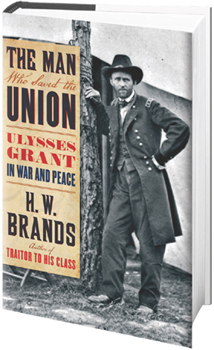
A masterful biography of the Civil War general and two-term president who saved the Union twiceon the battlefield and in the White House.
Once again, H.W. Brands has crafted a wonderful portrait of a great leader who endured and prevailed in hours of stress and strain. Brandss U.S. Grant is a compelling figure, a man too often overlooked by history. This book rectifies that with grace and insight.J ON M EACHAM , author of American Lion, winner of the Pulitzer Prize for biography
There is a magnificent unity to this story of Grants leadership in both war and peace that is not found anywhere else. In this compelling narrative, Grant emerges more fascinating than ever before.D ORIS K EARNS G OODWIN , author of Team of Rivals and No Ordinary Time, winner of the Pulitzer Prize for history
www.doubleday.com

AN ANCHOR BOOKS ORIGINAL, JUNE 2011
Copyright 2011 by H. W. Brands
All rights reserved. Published in the United States by
Anchor Books, a division of Random House, Inc., New York,
and in Canada by Random House of Canada Limited, Toronto.
Anchor Books and colophon are registered trademarks
of Random House, Inc.
Photo section credits: Picture History: .
Library of Congress Cataloging-in-Publication Data
Brands, H. W.
The murder of Jim Fisk for the love of Josie Mansfield : a tragedy
of the Gilded Age / H. W. Brands.
p. cm.(American portraits)
eISBN: 978-0-307-74327-5
1. Fisk, James, 18351872Assassination.
2. Fisk, James, 18351872Relations with women.
3. Capitalists and financiersUnited StatesBiography.
4. MurderNew York (State)New YorkHistory19th century.
5. Mansfield, Josie. 6. ShowgirlsUnited StatesBiography.
7. New York (N.Y.)Biography. 8. New York (N.Y.)Social life and
customs19th century. I. Title.
CT275.F565B73 2011
974.7103092dc22
2010051174
Author photograph Marsha Miller
www.anchorbooks.com
Cover: Jim Fisk Bettmann/Corbis: Josie Mansfield, photograph by William S. Warren Picture History
Cover design by W. Staehle
v3.1_r1
Contents
A gray blanket cloaks the trees of Montparnasse on a late autumn morning. Smoke from the coal fires that heat the homes and shops along the narrow streets swirls upward to join the fog that congeals intermittently into drizzle. This part of Paris hides the signs of the Great Depression better than the blighted industrial districts, but the tattered storefronts, the shabby dress of men with nowhere to go, and the age of the few cars that ply the streets betray a community struggling to keep its soul together.
An old, oddly configured vehicle lumbers slowly along the cobbles. The dispirited pedestrians pay it no mind. Nor do they heed the two women and one man who walk behind it. The women appear to be locals; the shawls around their shoulders and the scarves on their heads could have been taken from the woman selling apples on one of the corners they pass or from the grandmother dividing a thin baguette among her four little ones. (Or could she be their mother? Hard times play evil tricks on youth and beauty.)
The man must be a foreigner. He dresses like an Englishman, one whom the Depression seems to have spared. His heavy wool coat and felt hat shield him from the damp; the coats collar and the hats brim hide his face from those around him. He might be an American; he walks more assertively than the average Englishman. He probably walked still more assertively when he was younger, although how many years have passed since that sprightly era is impossible to say.
The two women speak quietly to each other. Neither addresses the man, nor he them. The vehiclewhether it is a car or a truck is as much a puzzle as most else about this small processionslows almost to a stop, then turns onto the leaf-strewn lane of the cemetery that these days forms a principal raison dtre of the neighborhood. It moves tentatively along the track, picking its way among the gravestones and mausoleums, beneath the connecting branches of trees left over from when the farm on this site began accepting plantings that didnt sprout, not in this existence. The driver finally locates what he has been looking for, and he stops beside a fresh pile of dirt that is gradually turning dark as the drizzle soaks in. Two men shrouded in long coats suddenly but silently appear, as if from the earth itself. They stand at the rear of the vehicle as the driver lowers the gate. They grasp handles on the sides of the bare wooden box the vehicle contains, and with a nonchalance just shy of disrespect they hoist it out and set it on the ground between the pile of dirt and the hole from which the dirt has come.
They step aside, wordlessly letting the three mourners know that this is their last chance to commune with the deceased. One of the women produces, from a cloth bag, a small cluster of chrysanthemums and places it on the coffin. The man takes a rose from inside his coat and, with quiet tenderness, lays it beside the other flowers.
The three step back and gaze down at the wooden box. The drizzle turns to rain. The gravediggers slip short loops of rope inside the handles and lower the coffin into the grave. They pull up the ropes and begin shoveling the dirt back into its hole.
The hearse drives away, at a faster pace than before. The women walk off together. The man lingers. He looks at the grave, then at the city in the distance, then back at the grave. Finally he too departs.


